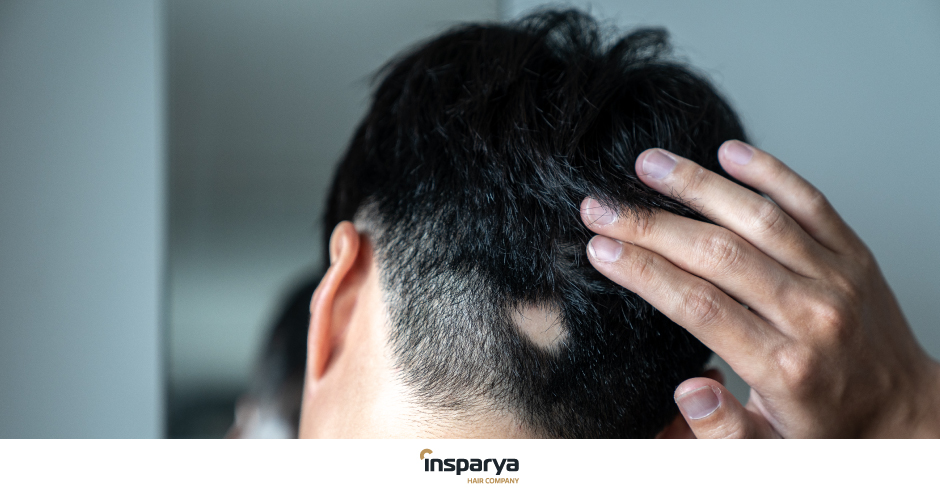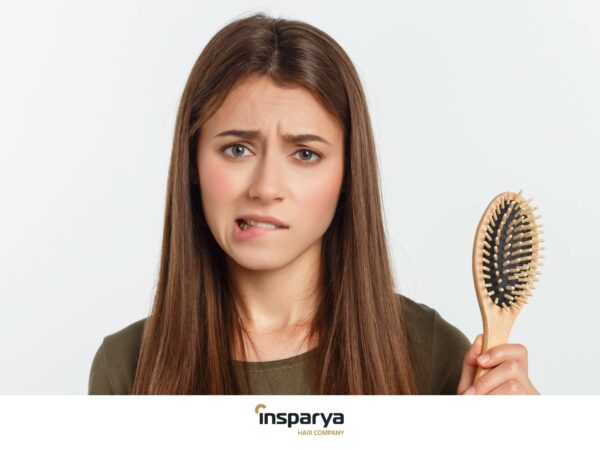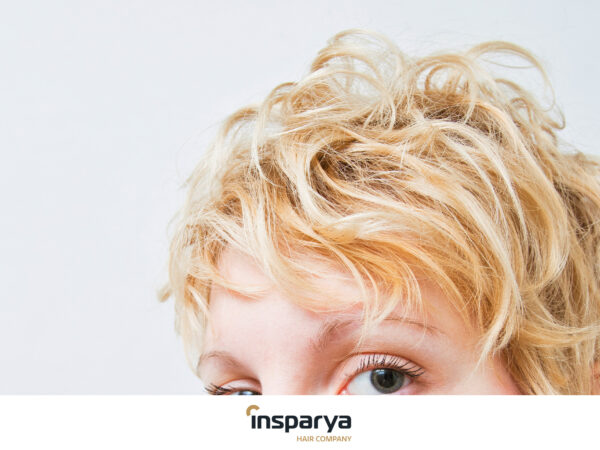
Alopecia Areata
Besides androgenetic alopecia, one of the most common types is alopecia areata. According to studies by the NCBI (National Center for Biotechnology Information), alopecia areata affects both genders equally, often starting before the age of 30. In this article, we will offer you a better understanding of what this very common disease consists of in terms of hair health.
What is alopecia areata?
Alopecia areata is a type of hair loss that occurs in localised areas, usually in the shape of a patch (somewhat large circles). It can appear anywhere on the scalp and may also occur in the beard area. There are even cases where it can occur in other areas of the body.

Causes
This is an autoimmune disease, and the exact cause is not currently known. However, research sheds some light on it and shows us several factors that may trigger or contribute to its appearance. A highly common example that’s frequently mentioned is stress; in situations like the pandemic (and confinement), this occurs more frequently.
There are also other infections and pathologies that can play a harmful role, increasing the likelihood of alopecia areata. These infections and pathologies can be found in dental infections, for instance (to a lesser extent than stress). Beyond infections or pathologies that trigger the disease, it is also important to emphasise that genetic predisposition is necessary and key for this problem to occur.
Prevention
As with any disease, the first thing to do is to look for the underlying cause, but that proves difficult in this case since we can only try to avoid the factors that predispose us to the disease, such as stress and infections. That’s why alopecia areata is a difficult disease to prevent. The best recommendation is to lead a healthy life, have a balanced diet, exercise, and for hair care, use shampoos of the highest quality, following specific guidelines that will allow you to stay strong and healthy.

Treatments
Treatment is the same for women and men. There are multiple ways to treat alopecia areata, such as:
- Liquids or creams with corticosteroids,
- Liquid minoxidil,
- Injecting corticosteroids,
- Corticosteroids in tablet form,
- Immunomodulatory creams, which are contact allergens that provoke an inflammatory reaction that displaces the inflammation underlying alopecia areata, and in doing so, allows hair growth. The most common of these immunomodulators is deferiprone.
- Immunosuppressants like cyclosporine and azathioprine can also be used.
Platelet-Rich Plasma (PRP) is an innovative supporting treatment that’s been confirmed by scientific studies and can have very positive effects in treating alopecia areata.
Though experience shows us that it currently is not 100% effective or the definitive treatment, it is important to emphasise that the best course of action is sometimes observation. There are situations, such as in the case of small plaques, where they may recover on their own.
When facing any hair problem, the best option is always to go to a specialist who will assess what type of alopecia you have and what degree in order to determine the optimal treatment for your recovery. At Insparya, we have more than ten years of experience with the best professionals, research team, and our own technology and technique.




